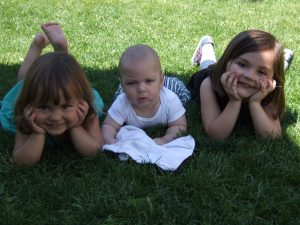
Like many people in my field, I happen to fall into it without really knowing what I was getting into. When I first encountered Applied Behavior Analysis (ABA) in 2003, I was working on my Bachelors of Arts degree in dance at the University of Minnesota. I was also studying American Sign Language (ASL) and saw a job posting looking for someone with experience with ASL to work with a young girl with autism. I decided to give it a try. I worked with a Board Certified Behavior Analyst (BCBA) and quickly realized that ABA was complex and I wanted to learn more. What initially impressed me was the effectiveness of ABA. It was incredibly rewarding to work with a child and see their progress unfold; I was hooked. I continued working with children with autism for over a decade in Minneapolis, London and Madison.
When I began studying ABA for my Master’s program, I realized that this science was more far-reaching than I had realized. It wasn’t just for children with autism; it could be applied to everyone! The science of behavior applies to all organisms. I started to pay attention to how the environment shapes behavior, including my own. I realized I could use this technology to help me achieve my personal goals. This came in very handy while working on my Master’s degree- I did one class each semester while being a full-time mother to 3 small children and dancing professionally. I basically completed my whole degree during my kids nap time and after their bedtime over several years. (Personally so grateful for sleep training research)

My babies in 2012
Looking back, I have always had a deep curiosity about human nature. Behavioral Science has helped me understand people and why we do the things we do. It has helped me to let go of my critical judgments of others and instead have an analytic curiosity about the variables that shape their behavior. Behavior is communication and we can explore and understand why it is occurring. It has given me a glimmer of hope for how we can improve some of the devastating problems in the world (most of which involve human behavior). I can’t help but be excited because we have a science to understand and improve the human condition! Behavioral Science may prove to be our most important science.
Being a Behavior Analyst requires a certain dichotomy of skill; you have to be both creative and scientific. I feel grateful to have landed in this career which gives me both an effective scientific technology and the opportunity to use my creative side to problem solve and find real-life solutions. I also get the honor of helping people experience real and measurable change in their lives. I love working with people and finding the common ground that we share as teachers, parents, and humans.

Studying behavioral science has been a life-saver for me as a parent; parenting doesn’t come with an instruction manual but understanding principles of behavior can relieve a lot of the struggle. It also has helped me shape my own behaviors related to health; most of us have adequate information about what we should or should not do to stay healthy, it actually comes down to behavior-change. I have seen the real benefit of using Behavior Analysis both personally and professionally for many years and across a variety of circumstances.
My goal is to share this powerful science in a way that can create real solutions that improve people’s lives.
